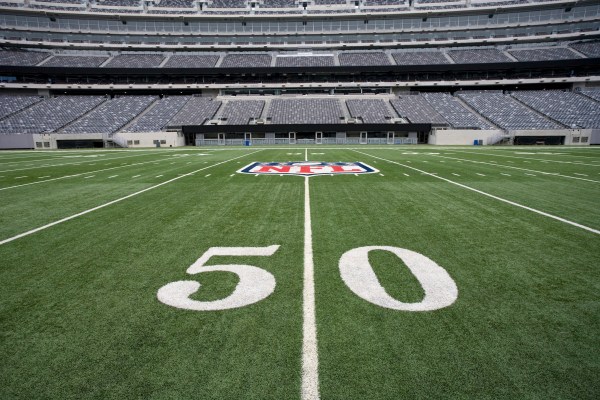With the start of the new NFL season upon us, fans across the U.S. — and indeed across the whole world — are turning their attention to who the winners and losers will be this year, and who’ll be making their way to Super Bowl LI on February 5, 2017 at NRG Stadium in Houston, Texas.
With plenty of interactive and innovative ways for fans to get involved, such as Fantasy Football, perhaps the most exciting news for sports fans is the NFL’s deal with Twitter to live stream 10 games for free worldwide. This landmark deal, announced back in May, sees social networks finally able to take on traditional broadcasters, moving beyond being just a platform and into the business of content proper.
It is clear that both the NFL and Twitter are seeking to tap into the explosion in popularity of streaming video, which now accounts for more than two-thirds of all internet traffic, and is expected to jump to a staggering 82 percent by 2020. For the NFL, this builds on a previous test case with Yahoo, streaming one game last season, which successfully yielded 15.2 million viewers and 33.6 million video streams.
What is also clear is that sports fans love to watch events live, as 95 percent of total sports program viewing happens in real time, meaning Twitter is sitting on top of a massive opportunity here. The instant nature of Twitter conversation has always appealed to sports fans, with 50 percent of all Twitter’s TV conversations focused on sports. That many of us use social networks while watching live programming is behavior that both Twitter and broadcasters are aware of — but until now, neither have really made the most of this opportunity.
The stage is set for some intriguing battles for live TV rights between established broadcasters and innovative technology companies.
Twitter CEO Jack Dorsey has said much about how he sees live experiences as being at the heart of the future of Twitter. The aim is to keep people on the social network for longer, increasing the opportunity for users to be targeted by advertising. In this sense, the deal with the NFL represents a watershed moment not only for sports fans who now have a new, potentially much more interactive, way to watch their favorite teams, but also arguably Twitter’s best opportunity to date to prove that it can be a valuable platform for advertisers.
So, the questions now revolve around how the content and accompanying advertising is going to be presented to users. Since the announcement of the deal, we’ve had some clues from other sports. In early July, Twitter unexpectedly began streaming live footage from the Wimbledon tennis tournament in a collaboration between Twitter, ESPN and the All England Club.
However, it did also say that this experiment was “an extremely early and incomplete test experience, and we’ll be making lots of improvements before we launch it in its final form.” There was a lot of criticism of the Wimbledon experience, the small viewing area versus the size of the tweet stream being one.
Twitter recently announced it had outsourced the back-end delivery of its sports streams to BAMTech, which powers over 25,000 live events, making obvious to all that it will instead dedicate many more resources to try to make the live video experience as good as it can be for football fans.
While there is much to improve on, it’s clear that social networks are aware of the behavior and needs of fans — whether the sports have a global reach like tennis and the NFL, or whether they have a much more niche audience. Similarly, broadcasters recognize the importance of streaming — rather than broadcasting — so-called “minority” sports.
At the end of June, Walt Disney Co. — owners of ESPN and ABC — agreed to acquire a one-third stake in the video-streaming unit of MLB Advanced Media, the digital arm of Major League Baseball. This deal shows just how important it is for ESPN to be able to offer digital packages, rather than just traditional cable TV packages, in its fight to regain lost advertising revenue.
With the biggest sports media company in the world moving to ensure that tech giants like Twitter don’t steal a march on them, the stage is set for some intriguing battles for live TV rights between established broadcasters and innovative technology companies. The line between broadcaster and technology platform will continue to blur — NFL games broadcast live on Twitter is just the beginning.
Hopefully the biggest result of this will be that consumers have a greater choice of more innovative, interactive ways to watch their favorite sports, while bringing sports like baseball — which don’t have a large following outside of the U.S. — to entirely new audiences. The potential for advertisers to then take advantage of an increasingly engaged and global set of fans will follow.
